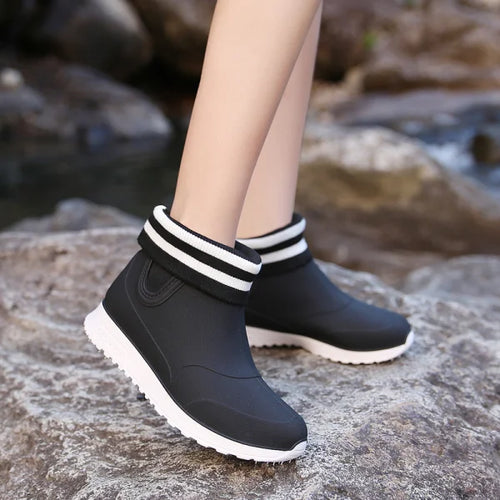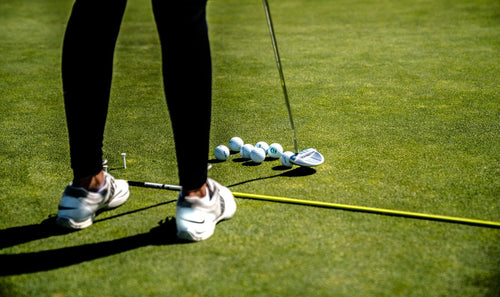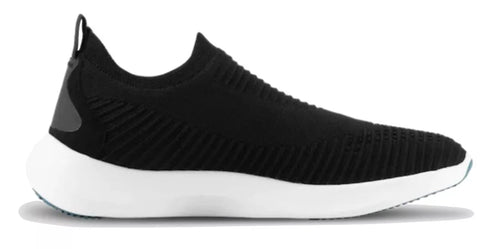Comfort is the most crucial factor when it comes to shoes. Shoes that don’t fit properly can cause various foot problems, including blisters and bunions.
Besides that, shoes also affect your posture, balance, and gait. It is important to choose a shoe that fits properly and provides adequate arch support and cushioning.
The right kind of footwear begins with the right size. You can easily avoid all the trouble if you buy the right size that fits. Then the ideal shoe must be comfortable, breathable, and designed to support the arch.
Let’s examine how the right (and wrong) kinds of footwear can affect your feet and body.
How Shoes Affect Your Feet and Body
Although we wear shoes on our feet, they affect our entire bodies and postures.The wrong type of shoes can cause pain, discomfort and can even lead to postural misalignment. Here are a few areas the right footwear can help support our structures.
Support
First and foremost, the right shoes will support your feet and ankles the way they should. Your feet, ankles, and legs are the foundation of your body when standing and walking. Shoes should be designed and fitted to provide a snug fit around the contours of your feet.
It helps reduce the risk of ankle sprains, plantar fasciitis, and other conditions associated with foot pain.
Pain Relief
Many doctors recommend orthotic footwear for people with ankle, knee, neck, and back pain. The footwear is designed to provide the most comfort and support to keep your body aligned.
This way, these shoes alleviate pain and help your body heal.
Protection from Foot and Ankle Troubles
The appropriate shoes keep the feet safe from injuries and balance troubles and provide the necessary traction and support. This also helps keep the feet safe from long-term adverse effects.
Breathability
The wrong shoes can cause your feet and body to overheat and can lead to foot problems. It's important to choose shoes that are breathable, so your feet don't sweat too much.
Support For Athletes
People like athletes who spend a lot of time on their feet need ample support and comfortable footwear. Proper footwear is essential for their performance, safety, and general well-being.
What Improper Footwear Does to Your Feet
Improper footwear restricts your mobility and could lead to permanent misalignment over the long run. Moreover, these could also lead to further foot trouble, like:
- Injuries and fall
- Aggravated pain and inflammation
- Corns and calluses
- Plantar fasciitis
- Ingrown nails
- Shin splints
- Bunions
- Hammertoes
These are painful conditions that affect the appearance of the foot. Hence try to find the right pair of shoes that comfortably provides the needed support.
If you continue wearing the wrong pair for hours, it could lead to long-term foot damage. These conditions, when they get worse over time, require surgeries and treatments for corrections.
You may also like: Best Places to Buy Affordable Comfortable Work Shoes Online 2022
Type of Footwear and How it Affects the Foot
As you know, there are different types of shoes and footwear. Like we have flip-flops, joggers, sneakers, heels, etc. If not right for the foot, all these shoes affect your bone structure and balance.
Let's look at the different categories of shoes and their effects on the foot and our bodies.
High Heels
You may have heard all the myths and facts about how the heel affects your balance, structure, and foot alignment. High heels mainly concentrate all the pressure in one area. So instead of distributing your body weight all over, it only falls over part of the foot.
Heels are further categorized into three types:
- Wedges: These are platform heels. Although the weight is much more evenly divided in these compared to the heels, these often lead to falls and balance troubles. This is because the whole foot is lifted off the ground. Hence it can cause sprained ankles and other issues.
- Stilettos: High heels or pencil heels are often termed stilettos. These are the worst of the lot for foot trouble. The weight falls on the ball of the foot, and if worn for long periods, the ball feels sore and numb. It also puts pressure on the leg and hip muscles, causing pain.
- Pumps: These have high but thick heels. Again the weight falls on the balls of the foot but isn’t concentrated like in the stilettos. These can also affect your ligaments and tendons if worn for the long term.
While all these shoes look different in style and design, they are all linked to causing bunions, corns, and hammertoes.
Plus, they have one factor in common, i.e., the front part is tight. So your toes and fingers get squeezed together. Hence if the footwear is not the proper size or comfortable enough, your toes will start hurting after a while.
The longer you wear them, the more you risk getting calluses and other foot troubles.
How to Avoid Heel Trouble
The first thing to do is to avoid wearing heels as much as possible. Yes, that’s a hard pill to swallow. But if you must, then keep the height max at one inch.
Plus, always carry an extra pair of flats or comfortable work shoes. Switch to the other pair if you must wear the heels for a long time.
Flats / Flip-Flops
These are the highly preferred shoe types due to their comfort and ease. However, usually, these flats do not provide any form of support for the arch. This can lead to plantar fasciitis, a severe foot condition.
How to Avoid Trouble
Make flats exclusive for places like the beach, ballet, etc. You may also get shoe inserts for comfort and to improve arch support. Instead of buying shoes without a grip, look for sandals with straps.
Straps and other heel support also comfort the arch, and your foot and toes stay relaxed instead of curling up when walking.
Sneakers and Joggers
Sneakers cannot be exclusively associated with a particular sport, physical activity, or preference. As a result, there are many different types of sneakers. Some are great for weight, some provide excellent traction, and others provide ventilation and breathing.
Moreover, contrary to popular belief, finding the right sneaker size is much more complex than assumed. The wrong type, size, or supportive sneaker can easily cause damage and injury to the foot.
Try to get comfortable footwear like Loom waterproof sneakers, which are great for daily wear. These sneakers are durable and great for walking, running, and keeping your feet dry through the daily sweats.
How to Avoid Damage and Injury
When buying the shoe, get help from the trained service staff. Check the shoe size and select the appropriate type required for a particular activity.
For example, for golf, wear golf shoes. For jogging, wear running shoes, and so on.
Tips to Buy the Right Shoe
What if you have been wearing the wrong shoe for a specific time, and that has caused corns or bunions or changes in the foot structure? How to fix that?
Here are a few tips that’ll help restore your foot health.
- When shopping for shoes, make sure to look for shoes that have a wide toe box and arch support. The widest part of the shoe should be equal to the widest part of the foot. If it is too tight, your toes will be compressed and bunions can form.
- Always try on both shoes, and spend some time walking around the store to make sure they are comfortable. Don’t be tempted by a sale or a discounted price if the shoe doesn’t feel good.
- Look for shoes with removable insoles or orthotics, so you can customize the fit of your shoes as needed.
- If you have a high arch, look for shoes that provide extra cushioning and support around the arch to help distribute weight evenly.
- When trying on the shoe, wiggle your toes. See if there’s enough room for them to breathe in.
- Feel and examine the inner cushioning. Is it enough? Since you may be wearing the shoe for the whole day, the inner seams must be comforting.
- Walk around or run to check the shoe's grip, traction and comfort.
- Use arch support and a heel cup to reduce the pain under the heel and arch. They lift the foot, take the pressure off it, and support the movement.
- Make sure to keep your shoes clean and dry. Wear two pairs of socks on really cold days, and alternate between different pairs of shoes.
Bottom Line
Buying the right kind of footwear is not easy. You must always stick to your comfort, and the design must go with your lifestyle. So, keep your feet happy and balance comfort with style.
Look for the most comfortable work shoes to prevent foot injury and problems like corn, calluses, etc. Remember, your shoe must fit comfortably while supporting the entire foot.
When you can, try the shoe before you buy it! Happy shopping!
Also read: Christmas 2022 | 15 Gift Ideas for Shoe Lovers and Where to Buy It!
























